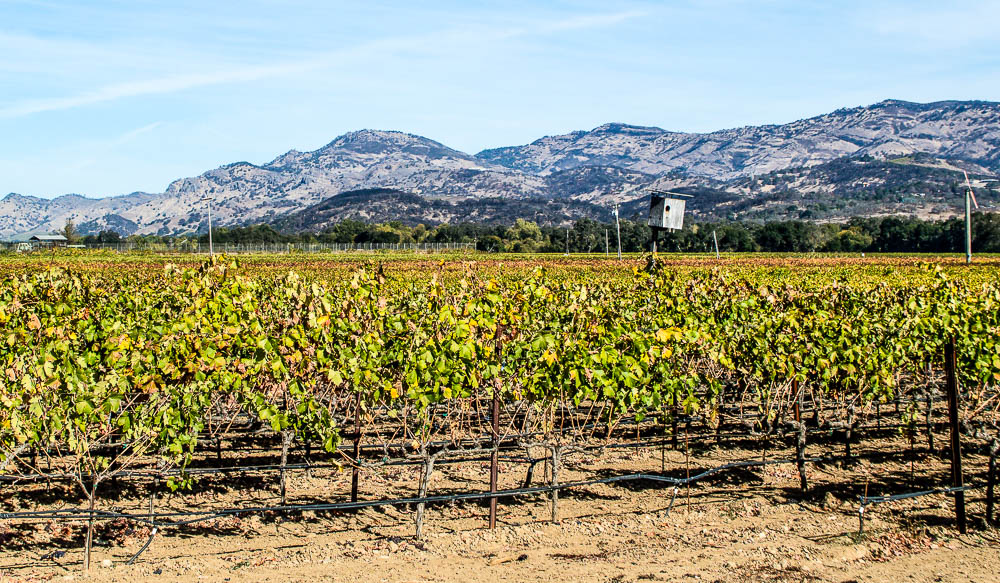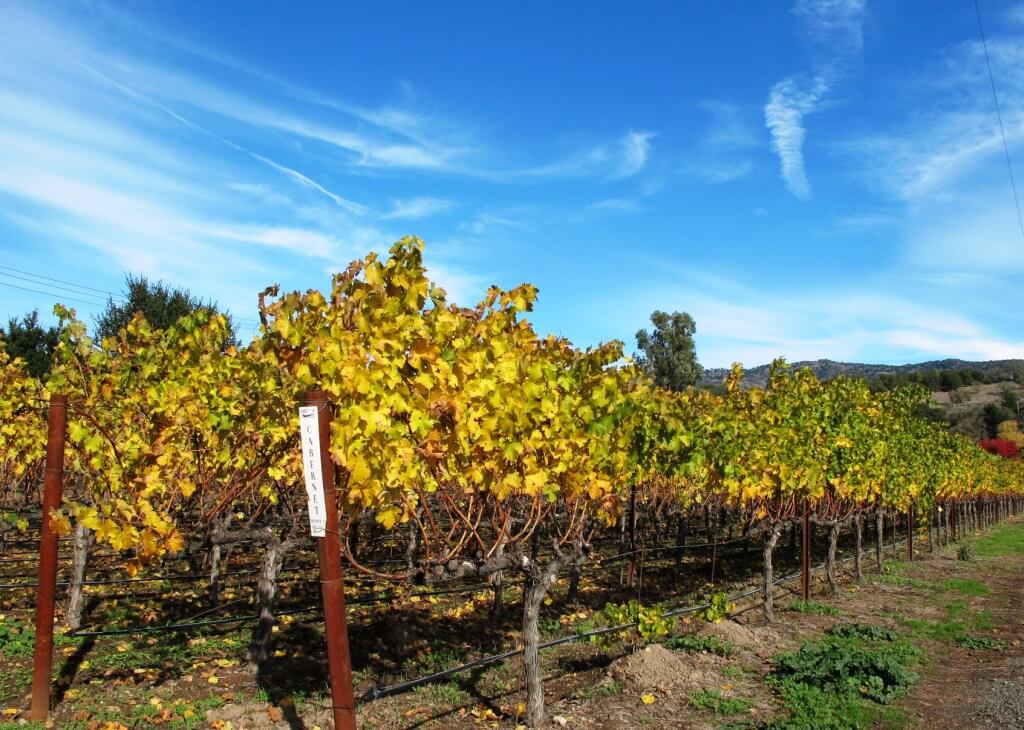When you think of Napa Valley, history probably doesn’t come to mind. But since I’ve gotten to know the area well, I’ve discovered that there’s plenty of history waiting to be discovered if you know where to look. I’ll be heading there this weekend to dig deeper into the history of the Stags Leap District of Napa Valley. As you plan your first (or tenth or twentieth) Napa Valley visit, go beyond the picture-perfect tasting rooms for a better appreciation for this small yet important part of California’s history.
Napa Valley History
Settlers first arrived in Napa Valley in the 1830s and grapes were planted soon after. Several of the early wineries are still around — Beaulieu Vineyards, Freemark Abbey, and Charles Krug (the oldest winery in Napa Valley), to name a few.

Visiting historic wineries in Napa Valley
Beringer Winery
There are many wineries in Napa Valley to choose from, but if you want some history with your wine, a good place to start is Beringer, California’s oldest continually operating winery. The entire estate was designated a Historic District on the National Register of Historic Places. The Rhine House from 1883 gives visitors a glimpse of what life was like for the winery owner, Frederick Beringer, in the late 19th century. The stained glass windows, gables and ornate details are a fine example of Victorian architecture in California.
You can stop by to peek in the Rhine House and the rest of the property or try one of their tasting tours, which start at $35 per person.

Stags’ Leap Winery
One of the most beautiful old wineries in Napa Valley is Stags’ Leap Winery, located down tiny lanes in the hills behind the Silverado Trail. Grapes were first planted here in 1872 and in 1890, the winery owners had the manor house built. It was here that the couple hosted the area’s most elite guests (new wealth thanks to the Gold Rush) and even the King and Queen of Portugal. The winery’s first vintage came in 1893.
Nowadays a visit to the winery includes a tour of the property focused on the history with a tasting inside the manor house. You can also visit during the annual Vineyard to Vintner event when the Stag’s Leap District wineries open their doors and pour their favorite wines alongside specially prepared food.
Regusci Winery

Another historic winery from the Stags Leap District is Regusci Winery, located in the hills just east of the Silverado Trail. Founded in 1878, the Grigsby-Occidental Winery became one of the preeminent wineries in the region; it was later bought by Gaetano Regusci in 1932 and has been in the Regusci family for 5 generations now. The family has continued the tradition of farming and wine making with a strong connection to the land. The property includes a beautiful vineyard of old twisted Zinfandel vines from the 1930s.
The winery offers three types of tours by appointment. If you go, ask them about the fire in 2017 — the family’s story is amazing!

Other historic wineries to visit for Napa Valley history
Chateau Montelana (established in 1888 as A.L. Tubbs winery and known for its historic stone architecture and its Chardonnay winning the 1976 Judgment of Paris)
Stag’s Leap Wine Cellars (their Cabernet famously won the 1976 Judgment of Paris)
Far Niente: one of the valley’s oldest wineries, the old stone building is listed on the National Register of Historic Places
Napa Valley history at state parks
Between the towns of St. Helena and Calistoga sit Bothe-Napa Valley State Park and Bale Grist Mill State Historic Park where you can experience more Napa Valley history. In the latter, you’ll find the historic mill from 1846 used by the pioneers who settled here to grind their wheat and corn. Walk around the mill and 36-foot-tall water wheel to get a sense of Napa Valley history, and if you’re here on a weekend, check out the milling demonstrations and tours.

Walk through the woods to the tiny pioneer cemetery with headstones dating back to the early days of the Napa Valley settlers. For hikes, try the 2-mile round-trip hike to Bothe-Napa Valley State Park, the canyon trail in Bothe-Napa Valley State Park, or just explore the shorter trails to the creek and cemetery near the mill. If you like to camp, the park offers tent and trailer camping as well as restored historic cabins and yurts.
Preserving Napa Valley’s historic grapes: Old vines at Biale Vineyards
Napa Valley may be known for its Cabernet Sauvignon, but Biale Vineyards sets itself apart from other wineries by preserving one of the area’s original grapes, Zinfandel. There aren’t many wineries in Napa Valley that still grow this grape even though it was one of the first grapes to be planted in Napa Valley. Fortunately, this winery works hard to help save the heritage vineyards of Napa Valley (and uses sustainable growing practices!).

Among Biale’s vineyards are the oldest Barbera grapes in Napa Valley and Zinfandel that dates back to the 1920s and 30s. The Old Kraft Vineyard, for example, contains Zinfandel grapes that were planted in 1890. And Biale has some great stories about what it was like to make wine in the past in Napa Valley. Pull up a chair on their outdoor patio overlooking the vineyards and hills and listen to the story of the Black Chicken, the password used for their Zinfandel in the early days.
But besides making beautiful wines from old vines, Biale is one of the most welcoming places I’ve been in Napa Valley! Biale Vineyards is by appointment only and offers several tasting options starting at $30 per person.
Napa Valley history in Downtown Napa
The town of Napa is the southernmost town in the Napa Valley and is full of charm and history. Founded in 1847, Napa has more pre-1906 structures than any other city in the Bay Area. As you walk the streets of the downtown, you’ll encounter historic buildings like the First National Bank, the Bounty Hunter, and restored theaters like the Napa Opera House and the Uptown Theater. See a historic walking tour of Napa here.
In the center of Napa’s lively downtown is the waterfront Napa Mill Complex from the 1880s. These old brick buildings include the Napa General Store, Silo’s Jazz bar, and the Hatt Building, which houses the Napa River Inn.

On the Historic Hotels of America registry, the Napa River Inn occupies three buildings including the Hatt Building from 1884. Though we stayed in a more contemporary room in the Plaza Building with views of the courtyard and the Napa River, the rooms in the Hatt Building harken back to Napa Valley history. Each room is carefully decorated with a historic look to reflect the property’s past.

Have you experienced some of Napa Valley history? I’d love to hear your suggestions!
More information about Napa Valley history:







